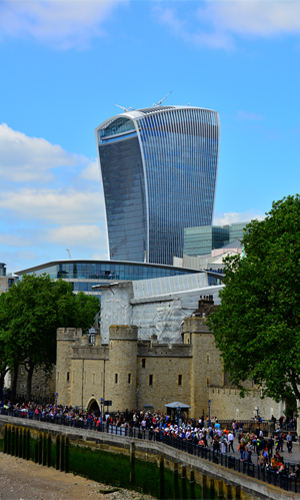Construction begins on Europe’s largest floating solar farm
Construction work has started on what will be the largest floating solar farm in Europe. Located at the Queen Elizabeth II reservoir near London, the project is part of a greater effort by Thames Water to source a third of its energy from renewable methods by 2020.
Once completed in March, the floating array will boast the impressive accolade of being the second largest of its kind in the world.
In excess of 23,000 panels will be floated on the surface of the reservoir water, generating enough electricity per year to power the equivalent of around 1,800 homes. Once complete, the finished array will cover around a 10th of the reservoir’s surface area – roughly the same area as eight Wembley-sized football pitches.
Thames Water has confirmed that the renewable electricity produced by the 6.3MW floating array will be used to power a water treatment centre nearby.
Energy Manager, Angus Berry said “Becoming a more sustainable business is integral to our long term strategy and this innovative new project brings us one step closer to achieving our goal – this is the right thing for our customers, the right thing for our stakeholders and most importantly the right thing for the environment.”
The installation will require over 61,000 floats and 177 anchors to keep the array above water and in situ, and is been delivered by solar energy company Lightsource.
Chief Executive at Lightsource, Nick Boyle commented that as an increasing number of industries quite rightly turn their attention to lowering their carbon footprint, the solar industry will need to develop new skills in order to ensure that future projects deliver maximum efficiency.
“There is a great need from energy intensive industries to reduce their carbon footprint, as well as the amount they are spending on electricity and solar can be the perfect solution. Therefore, constantly evolving new skill sets to ensure that all of our projects deliver maximum energy generation over the lifetime of the installation” said Nick.
Floating solar farms are considered an efficient way to maximise renewable energy generation in areas where land is scarce, by using the normally redundant surface area on reservoirs and lakes.
The largest floating solar array is currently under construction on a reservoir in Japan. Once completed, it will provide enough clean electricity to power nearly 5,000 households.
Advocates of the approach argue it can also reduce evaporation from reservoirs, while the cooling effect of the water is said to help improve output from solar PV cells.
News of the floating array follows the recent announcement that wind turbine towers are set to reach heights of up to 170m – almost as high as the Gherkin in London, in the near future. This shows that in the world of energy, renewables continue to power ahead in terms of growth and innovation.
















